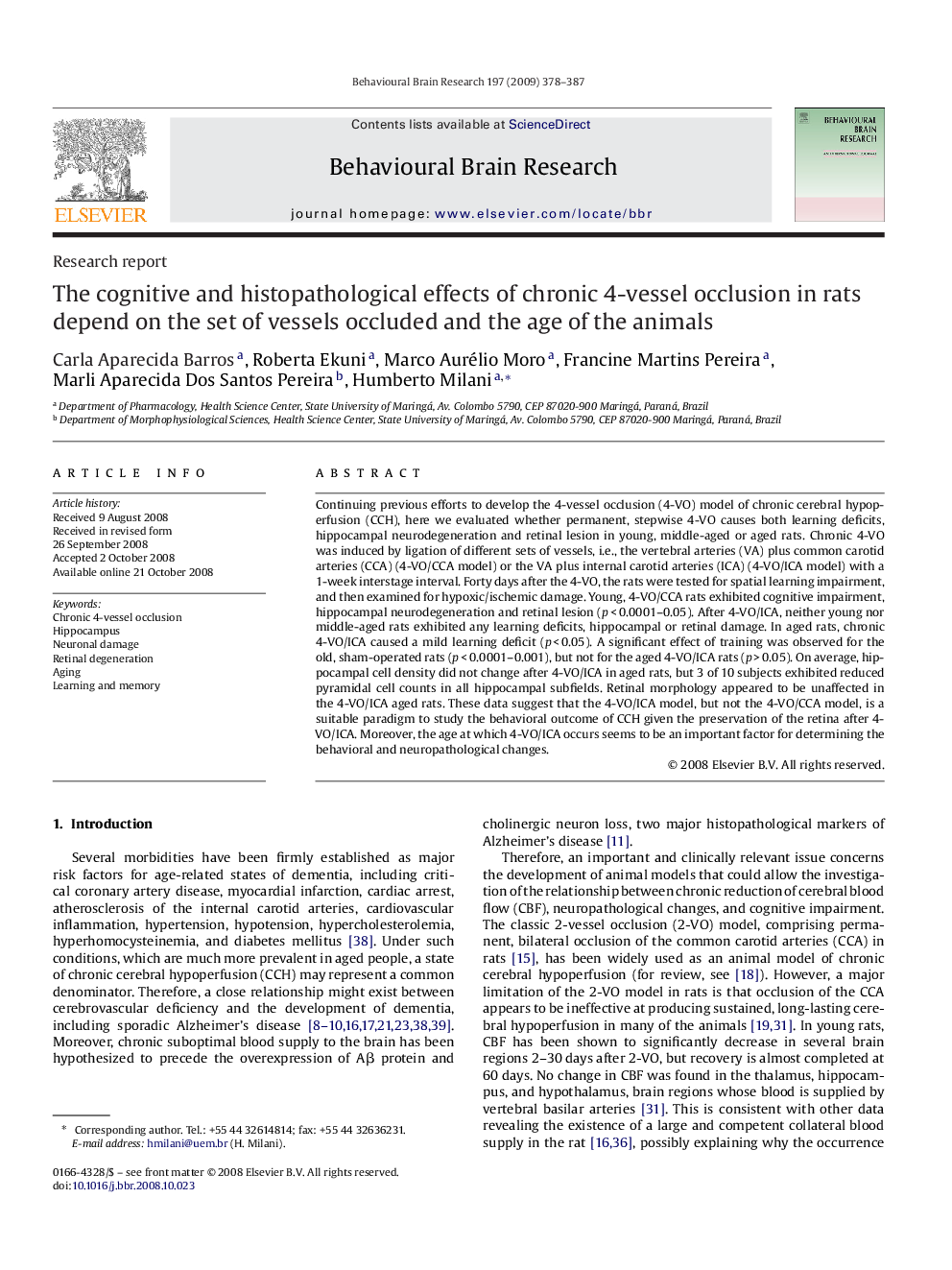| Article ID | Journal | Published Year | Pages | File Type |
|---|---|---|---|---|
| 4315062 | Behavioural Brain Research | 2009 | 10 Pages |
Continuing previous efforts to develop the 4-vessel occlusion (4-VO) model of chronic cerebral hypoperfusion (CCH), here we evaluated whether permanent, stepwise 4-VO causes both learning deficits, hippocampal neurodegeneration and retinal lesion in young, middle-aged or aged rats. Chronic 4-VO was induced by ligation of different sets of vessels, i.e., the vertebral arteries (VA) plus common carotid arteries (CCA) (4-VO/CCA model) or the VA plus internal carotid arteries (ICA) (4-VO/ICA model) with a 1-week interstage interval. Forty days after the 4-VO, the rats were tested for spatial learning impairment, and then examined for hypoxic/ischemic damage. Young, 4-VO/CCA rats exhibited cognitive impairment, hippocampal neurodegeneration and retinal lesion (p < 0.0001–0.05). After 4-VO/ICA, neither young nor middle-aged rats exhibited any learning deficits, hippocampal or retinal damage. In aged rats, chronic 4-VO/ICA caused a mild learning deficit (p < 0.05). A significant effect of training was observed for the old, sham-operated rats (p < 0.0001–0.001), but not for the aged 4-VO/ICA rats (p > 0.05). On average, hippocampal cell density did not change after 4-VO/ICA in aged rats, but 3 of 10 subjects exhibited reduced pyramidal cell counts in all hippocampal subfields. Retinal morphology appeared to be unaffected in the 4-VO/ICA aged rats. These data suggest that the 4-VO/ICA model, but not the 4-VO/CCA model, is a suitable paradigm to study the behavioral outcome of CCH given the preservation of the retina after 4-VO/ICA. Moreover, the age at which 4-VO/ICA occurs seems to be an important factor for determining the behavioral and neuropathological changes.
